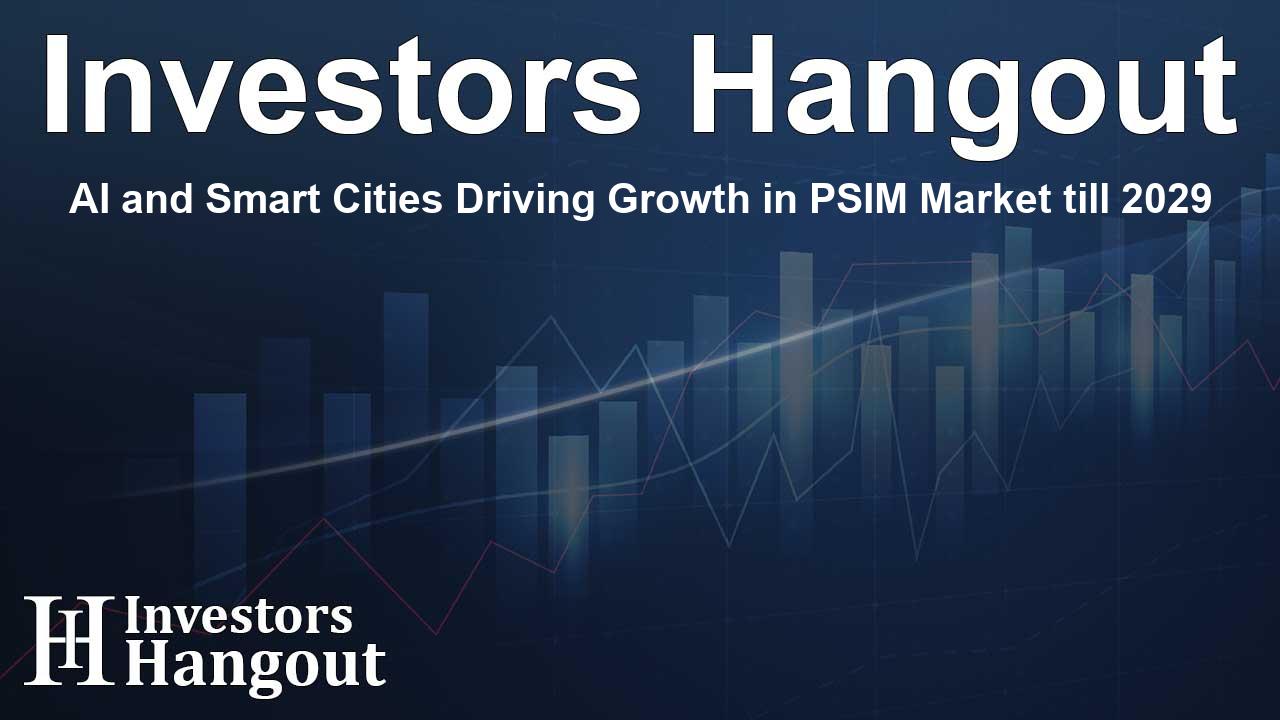AI and Smart Cities Driving Growth in PSIM Market till 2029

AI Integration in Physical Security Information Management
The global market for Physical Security Information Management (PSIM) is poised to experience significant growth, driven predominantly by advancements in artificial intelligence (AI) and the rise of smart cities. Reports anticipate that the market will expand by USD 6.55 billion between 2025 and 2029, with a remarkable compound annual growth rate (CAGR) of over 27.2% throughout this period. This transformation is largely fueled by the integration of Internet of Things (IoT) technologies, which enhance the capabilities of traditional security systems.
Emerging Trends in PSIM Market
In today's rapidly evolving security landscape, the increasing integration of IoT within PSIM solutions signifies a major shift. By connecting various devices, organizations can collect and analyze real-time data, leading to more informed decisions in managing security threats. This trend is immensely beneficial across different industries, particularly in waste management, energy, and water management sectors, where operational efficiency is paramount. Companies are recognizing the necessity of combining technologies like AI with traditional systems like CCTV and access control to bolster their defenses.
AI's Role in Enhancing Security
AI and machine learning serve as pivotal advancements in the development of PSIM systems. These technologies facilitate the learning and adaptation of systems to emerging security threats, greatly enhancing overall safety. Furthermore, the consolidation of various security tools into a singular, cohesive platform is becoming a prevalent trend. This not only promotes effective communication among disparate security systems but also assures greater operational efficacy in responding to potential threats.
Addressing Infrastructure Challenges
Despite the remarkable potential of PSIM, market expansion is not without its challenges. The reliance on advanced infrastructure—particularly for high-capacity storage and reliable bandwidth—is critical. As the demand for high-quality video surveillance grows, the necessity for robust network connectivity and efficient IT systems becomes increasingly evident. Any limitations in these areas can hinder the anticipated market growth during the upcoming forecast period.
Market Segmentation and Dynamics
The PSIM market is diversely segmented based on various criteria, including end-users, solutions, and geographical distribution. The end-user segment is expansive, covering industries from personal and commercial sectors to governmental and defense operations. Companies are keen on adapting PSIM solutions tailored to their unique needs, such as integration with existing security protocols and data management systems.
Regional Insights into PSIM Adoption
Geographically, North America stands out as the leading contributor to the PSIM market, addressing its sophisticated security demands. Europe and the Asia-Pacific regions are also emerging as significant markets, corroborated by their substantial investments in modernization and technological innovation within security frameworks. Integrating AI and IoT technologies within PSIM solutions is becoming common as regions seek to enhance their safety and operational efficiency.
Challenges in Implementing PSIM
Implementing PSIM systems necessitates overcoming several challenges inherent in their architecture. There is a critical need for seamless integration between various data sources and security systems. Achieving effective real-time data processing is paramount—failure to do so could render security responses ineffective. Furthermore, maintaining an up-to-date security information database and ensuring compliance with industry regulations adds layers of complexity to the implementation process.
The Future of PSIM Innovations
Looking ahead, the PSIM market is set to continue evolving, with AI-driven innovations at the core. Organizations that adopt these advanced technologies will likely remain at the forefront of security management, capable of proactively addressing potential challenges. The demand for integrated solutions that offer comprehensive situational awareness will be critical as businesses increasingly recognize the importance of securing their physical environments.
Frequently Asked Questions
What is the current growth rate of the PSIM market?
The PSIM market is projected to grow at a CAGR of over 27.2% from 2025 to 2029.
How is AI influencing PSIM solutions?
AI enhances PSIM by enabling systems to learn from data and adapt to new security threats in real-time.
Why is infrastructure important for PSIM?
Advanced infrastructure supports high-capacity storage and reliable bandwidth essential for effective video surveillance and analytics.
What sectors are driving the PSIM market growth?
Industries like energy, waste management, and commercial sectors are impactful drivers of PSIM market growth due to increased efficiency needs.
What are key challenges faced by the PSIM market?
Challenges include the integration of multiple systems, real-time data processing, and maintaining compatibility with various technologies.
About Investors Hangout
Investors Hangout is a leading online stock forum for financial discussion and learning, offering a wide range of free tools and resources. It draws in traders of all levels, who exchange market knowledge, investigate trading tactics, and keep an eye on industry developments in real time. Featuring financial articles, stock message boards, quotes, charts, company profiles, and live news updates. Through cooperative learning and a wealth of informational resources, it helps users from novices creating their first portfolios to experts honing their techniques. Join Investors Hangout today: https://investorshangout.com/
Disclaimer: The content of this article is solely for general informational purposes only; it does not represent legal, financial, or investment advice. Investors Hangout does not offer financial advice; the author is not a licensed financial advisor. Consult a qualified advisor before making any financial or investment decisions based on this article. The author's interpretation of publicly available data shapes the opinions presented here; as a result, they should not be taken as advice to purchase, sell, or hold any securities mentioned or any other investments. The author does not guarantee the accuracy, completeness, or timeliness of any material, providing it "as is." Information and market conditions may change; past performance is not indicative of future outcomes. If any of the material offered here is inaccurate, please contact us for corrections.